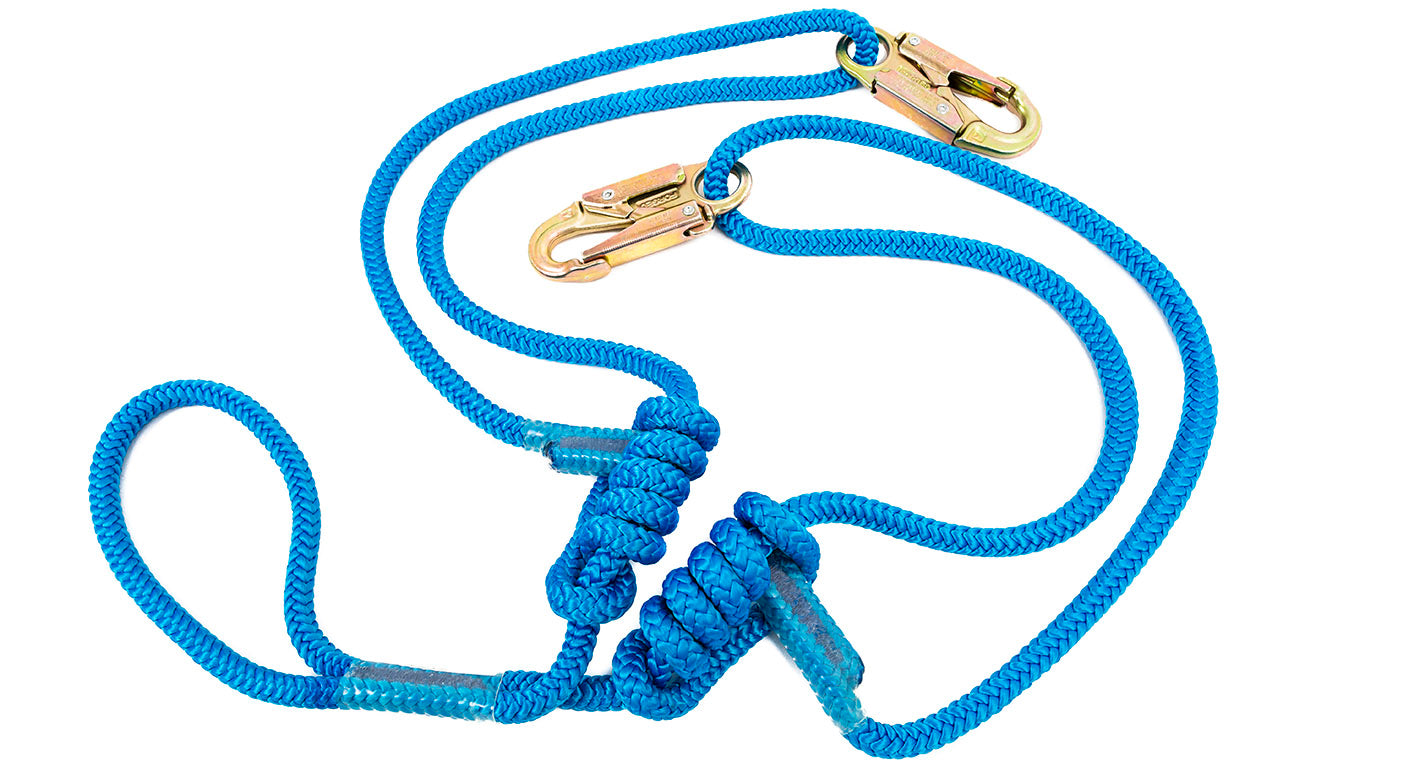I hate to say it, but our beloved hand spliced lobster claws and tethers are fading out. Despite having been a staple for decades, many traditional lobster claws and tethers made from three-strand rope no longer meet product certification requirements now part of ACCT Standards. While newer belay technologies have been introduced to the market in recent years, the simplicity, durability, and low cost of dual-leg lanyards makes them a popular choice for a wide range of operators. Now the lobster claw is back with updated materials designed to comply with modern equipment standards.
Where We Started
Many of us have trusted traditional dual-leg lanyards to keep ourselves and our participants secure while up high on the course. Once the staple of static belays, three-strand lobster claws where hand spliced by challenge course builders, independent manufacturers, and in some cases, course operators themselves. The three-strand of choice for decades was made of spun polyester which gives it that great fuzzy and grippy feel. Technically, this fuzz is considered “broken fibers” and does not meet the CI-1805 standard for Life Safety rope, now required by ACCT standards.

New ropes such as the New England Multiline have been manufactured to meet modern standards, but the questions still arise; who spliced these claws, when were they made, were they tested, and are they properly labeled for easy identification? Without these questions answered, hand-spliced lanyards may not be suitable for your operation, even if they are made from newer certified ropes.
Halfway There
Some manufacturers introduced webbing-based lobster claws that, while suitable for certification and standards, don’t quite live up to the feel and performance of rope-based counterparts. Buckle-type adjustments on webbing lanyards are not particularly intuitive. They can be hard for younger or inexperienced participants to adjust and can require more staff supervision and assistance. Once loaded, a webbing lanyard becomes nearly impossible to adjust making it more difficult to release the load during rescues without the addition of mechanical advantage. While certainly a personal preference, webbing-based lanyards just don’t provide the same grip and tactile feel as a high-quality rope.
Where We Are Today
EZ Adjust Y Lanyards are made of ANSI-rated components with sewn rope terminations. You can choose between a girth hitch and triple-lock carabiner for attaching to your harness and small or large snap hooks to best suit your application. The grippy solid-braid rope construction is easy to inspect and resists slip, ensuring adjustments stay locked in place. The design matches the feel of three-strand lobster claws without the unraveling and unsightly spliced ends and each unit comes labeled with a manufacture date to help keep track of your equipment. EZ Adjust lanyards even meet ANSI Z359.3 standards for adjustable positioning lanyards making them compliant for use by staff.
 When we set out to design EZ Adjust lanyards we wanted them to be instantly recognizable, intuitive for users, and have the added benefit of modern rope design and manufacturing processes. Of course, they also had to be made from certified components, easy to inspect, and compliant with ACCT Standards. We tested a wide range of materials and tweaked multiple designs, looking for the right combination of durability and performance. Introduced in 2017, EZ Adjust lanyards have quickly become a favorite upgrade for challenge course, zip line, and aerial park operators.
When we set out to design EZ Adjust lanyards we wanted them to be instantly recognizable, intuitive for users, and have the added benefit of modern rope design and manufacturing processes. Of course, they also had to be made from certified components, easy to inspect, and compliant with ACCT Standards. We tested a wide range of materials and tweaked multiple designs, looking for the right combination of durability and performance. Introduced in 2017, EZ Adjust lanyards have quickly become a favorite upgrade for challenge course, zip line, and aerial park operators. 




